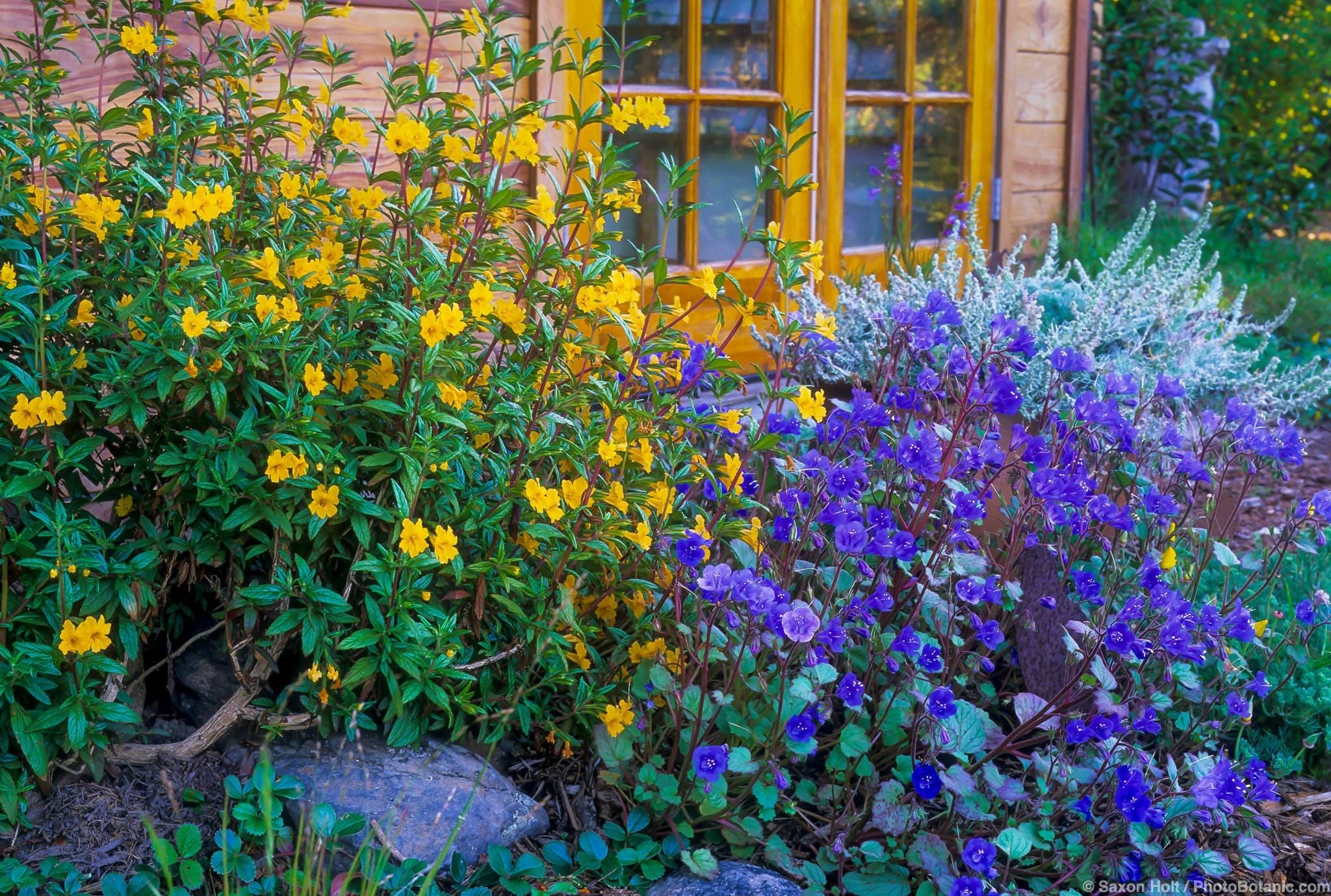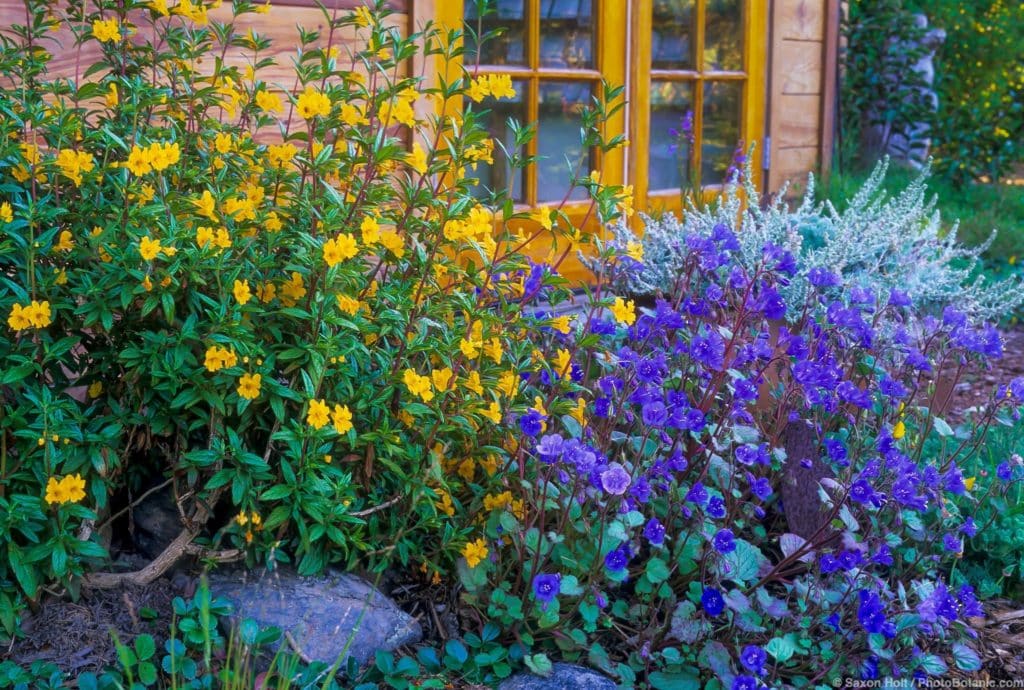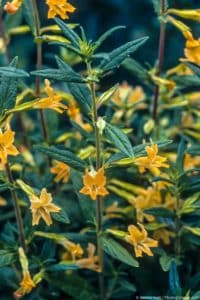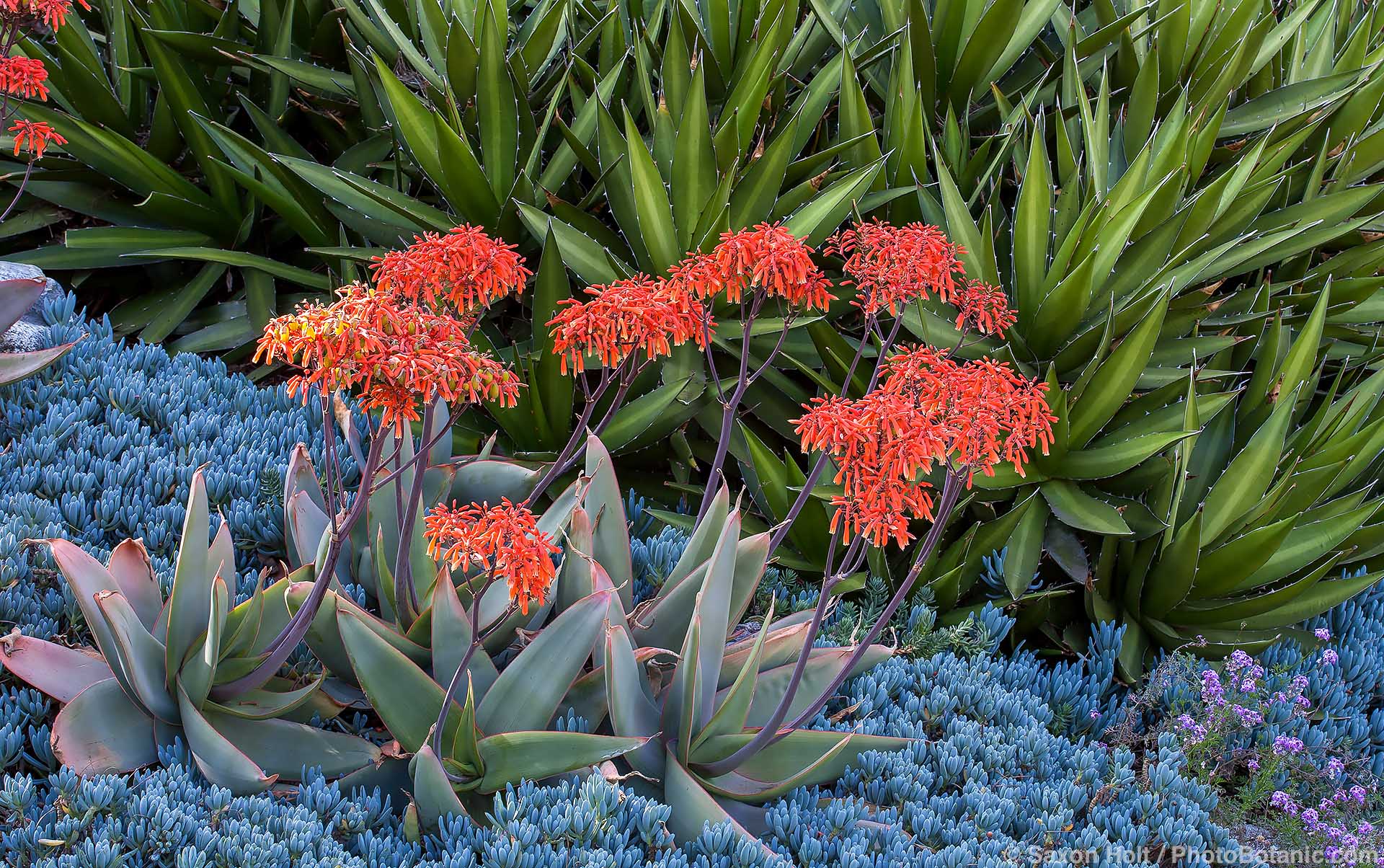Monkeyflower

Share This!
Gardeners in summer-dry climates often seek out plants that when fully established can survive without any supplemental water. This may require some tolerance for the dried-out appearance that many of these plants take on in late summer as they hunker down to make it through to the next rains.
Bush monkeyflower or sticky monkeyflower (Mimulus aurantiacus) is a natural candidate for summer-dry gardens that feature the colors of California. This is the deep orange to yellow-orange flower that, along with lavender lupine and bright orange poppies, graces California roadsides, parklands, and open spaces from spring into summer.
Tolerant of considerable dryness, bush monkeyflower goes semi-dormant in late summer or early fall, losing most of its leaves if unwatered. It may look more acceptable to passersby if you water it sparingly, but in all but the driest years it will get by with none. Bush monkeyflower prefers excellent drainage and thrives on slopes or mounds or in rock gardens where excess winter rains drain quickly away. Some afternoon shade is appreciated, especially in inland gardens.
An erect to sprawling woody perennial native to open hillsides and rocky outcrops throughout much of California, the long-lived, long-blooming bush monkeyflower is still sometimes called Diplacus, a former name that clearly distinguished it from other monkeyflowers (Mimulus species) that prefer regular summer water, rich soils, and some shade.
Upright or mounding from one to four feet tall and two or three feet wide, with glossy, narrow, sticky green leaves, bush monkeyflower tends to get leggy without yearly tip pruning and will accept a fairly hard cutting back. Butterflies and hummingbirds flock to it and deer usually ignore it. Nurseries carry many cultivars and hybrids with flower colors ranging from creamy white to peachy orange and bright red.
Share This!
Related Articles
By: Saxon Holt
By: Nora Harlow
By: Saxon Holt






